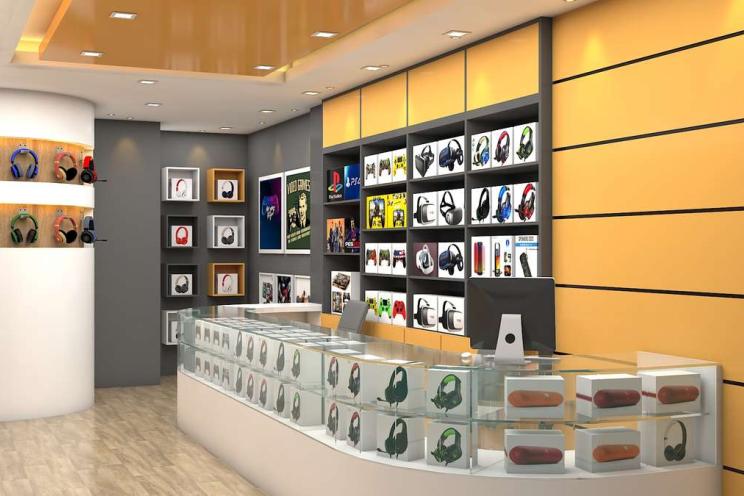
Step-by-step guide to opening a new restaurant
The restaurant sector is usually a winning sector despite the noticeable failure rates. Entrepreneurs still look forward to entering this food business because it can get popular quickly.
Opening a restaurant as a small investor is about combining your vision with practical strategies. It's more than just great food—efficiency, customer experience, and sustainability matter too.
And by integrating the right technology, especially a Point of Sale (POS) system, you can make the process smoother and more profitable.
A Step-by-Step Guide to Opening Your First Restaurant for Small Investors
Refining Your Concept and Crafting a Business Plan
- Concept Refinement: What vibe are you aiming for? A cozy café or a trendy restaurant? Defining your concept helps guide everything, from menu design to décor choices.
- Business Plan: Lay out your roadmap, including market research, cost estimates, and projected earnings. Stay mindful of your budget and plan for sustainable growth.
Here is a simplified Restaurant Business Plan Outline:
1. Executive Summary
- Restaurant Name: The Green Table
- Concept: Farm-to-table organic restaurant.
- Location: Downtown.
- Financial Goals: Break even in 12 months, and generate $180,000 by year two.
2. Business Description
- Target Market: Health-conscious professionals, and families.
- USP: Affordable, sustainable meals with a zero-waste kitchen.
3. Market Analysis
- Industry Overview: Growing demand for organic dining.
- Competitors: Other eco-friendly restaurants.
- Location: High foot traffic, minimal competition.
4. Marketing and Sales Strategy
- Channels: social media, collaborations with influencers.
- Pre-Opening: Soft launch with local influencers.
- Post-Opening: Loyalty programs, personalized marketing.
5. Operations Plan
- Location: 150 square meter space, $1,500 rent.
- Staffing: Head chef, six front-of-house staff.
- Technology: POS system for orders, inventory, accounting, and customer data.
6. Financial Plan
- Startup Costs: $33,000 (equipment, inventory, licenses).
- Projected Revenue: $130,000 in year one, increasing to $230,000 by year three.
- Break-Even Point: 20 customers per day in the first year.
7. Risk Analysis
- Risks: Competition, rising food costs.
- Mitigation: Strong branding, local farmer partnerships.
Selecting a Location and Managing Permits
- Location: Location can affect your restaurant’s success. When choosing a location for your restaurant, think about where your target customers spend their time. For example, if you're opening an organic café aimed at health-conscious professionals, you’ll want to be in a busy downtown area with plenty of foot traffic from nearby offices. This way, you’ll catch the lunchtime crowd looking for fresh, healthy meals.
If you’re opening a cozy, family-friendly restaurant, consider a suburban neighborhood near schools or parks, where families are likely to gather. Being close to your target audience and easily accessible, whether through public transport or parking, can make all the difference in attracting the right customers. Don’t forget to consider your suppliers too—choosing a location that’s near them can help keep your delivery costs down and streamline operations.
- Permits and Licensing: Make sure to research the permits you'll need, like food handling and alcohol licenses. These can vary depending on your restaurant's offerings.
Securing Funding and Financial Planning
- Funding Options: Consider loans, small business grants, or co-investors to help get you started. Your detailed business plan will be key in convincing investors.
- Cost Management: Plan for rent, wages, utilities, and food supplies. The first few months can be tough, so having a financial cushion is crucial.
Designing Your Space and Menu Development
- Ambiance: Your restaurant’s design should reflect your concept. Think about a layout that not only looks great but is functional for both staff and guests. For example, if you're opening a small, casual café with a farm-to-table theme, you might opt for a cozy, rustic feel. You could incorporate wooden tables, natural lighting, and earthy tones with greenery to create a warm, welcoming environment that complements your fresh, organic menu.
Alternatively, if your concept leans more toward a trendy urban eatery, think sleek furniture, modern lighting, and bold, contrasting colors to give the space a vibrant, energetic vibe. In both cases, the key is to design an ambiance that enhances the dining experience and resonates with your target audience.
- Menu: Focus on quality over quantity. A smaller, well-curated menu can help manage inventory and costs while giving customers a unique experience especially at the beginning.
The Role of Technology and POS Systems
For small investors, smart technology use is key to running a smooth operation.
- POS System Benefits: It’s not just about payments. A good POS system tracks sales trends, manages inventory, and streamlines operations.
- Features to Consider:
- Order Management: Ensure smooth communication between servers and the kitchen.
- Inventory Control: Some systems even notify you when stock is running low, reducing waste and keeping costs in check.
- Customer Data: Capture insights on repeat customers to tailor promotions and drive loyalty.
- Online Integration: Choose a system that integrates with online ordering for takeout or delivery, adding flexibility.
Hiring and Staff Training
- Hiring the Right Team: Look for passionate individuals who align with your restaurant’s values. They’ll be key to delivering great service.
- Staff Training: Make sure your team is comfortable using the POS system and understands the flow of operations. Well-trained staff boost efficiency and customer satisfaction.
Marketing and Pre-Opening Preparations
- Building Awareness: Use social media and community outreach to create buzz before opening. Hosting a soft launch can help iron out any operational kinks.
- Grand Opening: First impressions count. Focus on delivering a memorable experience to your first guests and consider offering special promotions to encourage repeat visits.
Post-Opening: Continuous Adaptation
- Customer Feedback: Keep listening to your customers and use your POS system to track what’s working—popular menu items, peak hours, and more.
- Stay Flexible: The restaurant industry is always changing. Be ready to adapt to new trends like contactless payments or online reservations.
Opening a restaurant as a small investor can be a rewarding but challenging journey. With careful planning, smart budgeting, and integrating the right technology, you’ll be better equipped for success. A reliable POS system helps streamline your operations, manage costs, and keep your customers happy, ensuring your restaurant stands out in a competitive market.





